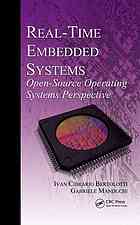

Most ebook files are in PDF format, so you can easily read them using various software such as Foxit Reader or directly on the Google Chrome browser.
Some ebook files are released by publishers in other formats such as .awz, .mobi, .epub, .fb2, etc. You may need to install specific software to read these formats on mobile/PC, such as Calibre.
Please read the tutorial at this link: https://ebookbell.com/faq
We offer FREE conversion to the popular formats you request; however, this may take some time. Therefore, right after payment, please email us, and we will try to provide the service as quickly as possible.
For some exceptional file formats or broken links (if any), please refrain from opening any disputes. Instead, email us first, and we will try to assist within a maximum of 6 hours.
EbookBell Team

4.7
16 reviewsReal-time embedded systems are integral to the global technological and social space, but references still rarely offer professionals the sufficient mix of theory and practical examples required to meet intensive economic, safety, and other demands on system development. Similarly, instructors have lacked a resource to help students fully understand the field. The information was out there, though often at the abstract level, fragmented and scattered throughout literature from different engineering disciplines and computing sciences.
Accounting for readers’ varying practical needs and experience levels, Real Time Embedded Systems: Open-Source Operating Systems Perspective offers a holistic overview from the operating-systems perspective. It provides a long-awaited reference on real-time operating systems and their almost boundless application potential in the embedded system domain.
Balancing the already abundant coverage of operating systems with the largely ignored real-time aspects, or "physicality," the authors analyze several realistic case studies to introduce vital theoretical material. They also discuss popular open-source operating systems—Linux and FreRTOS, in particular—to help embedded-system designers identify the benefits and weaknesses in deciding whether or not to adopt more traditional, less powerful, techniques for a project.